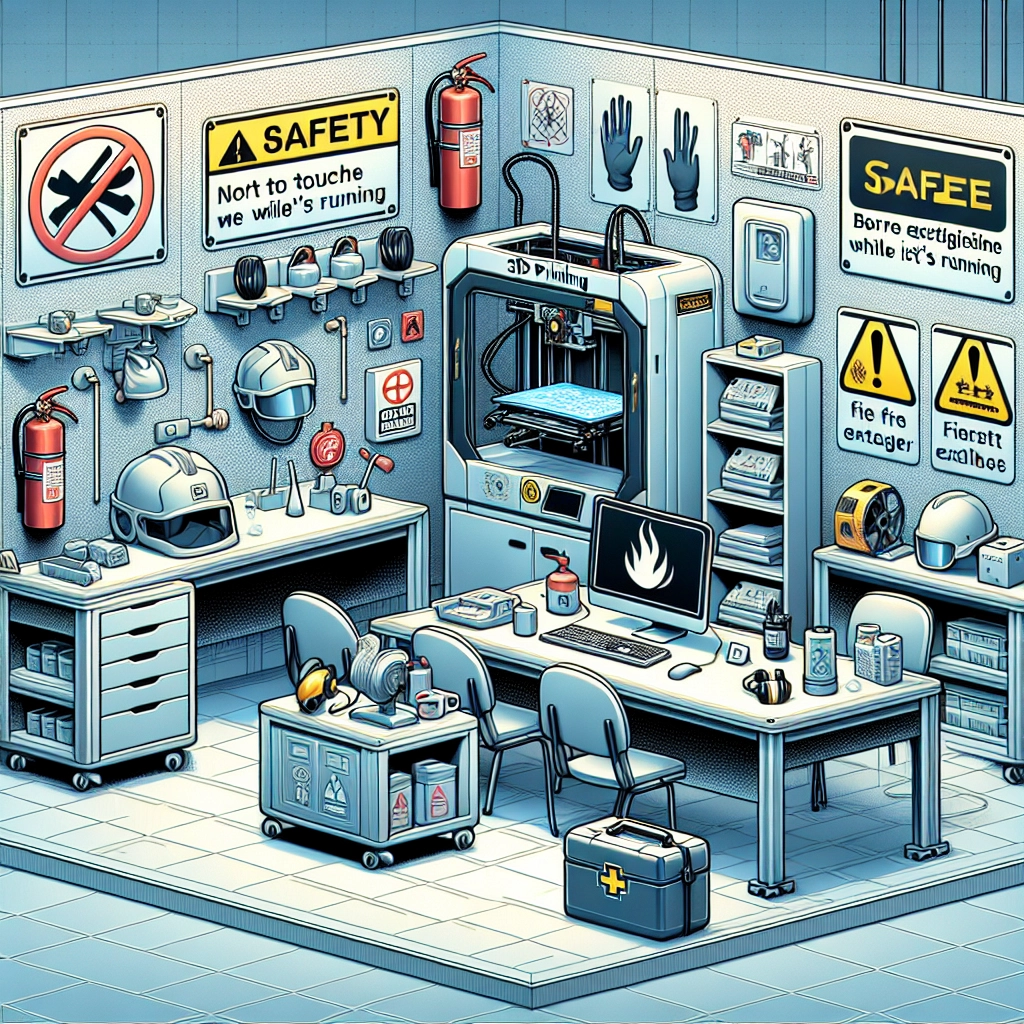3D Printing Safety: Best Practices to Keep You and Your Workspace Safe
3D printing has taken the world by storm, offering creativity and innovation at our fingertips. Whether you’re a hobbyist creating fun models or a professional engineer producing components, it’s crucial to remember that safety in the 3D printing world is just as important as the thrilling possibilities the technology brings. Here are some best practices to ensure you and your workspace remain safe while you unleash your creativity.
Know Your Material
First and foremost, familiarize yourself with the materials you’re using. 3D printers can handle a variety of filaments, from common ones like PLA (Polylactic Acid) to more complex materials like ABS (Acrylonitrile Butadiene Styrene) and PETG (Polyethylene Terephthalate Glycol). Each comes with its own profile of safety concerns.
PLA is generally considered safe and biodegradable, while ABS can release unpleasant fumes that might contain harmful substances when heated. Always check the Safety Data Sheets (SDS) for your materials to understand their chemical makeup and any potential hazards. This knowledge can help you take necessary precautions, such as using ventilation or working with personal protective equipment (PPE).
Ventilation is Key
One of the biggest concerns when using certain 3D printing materials is the fumes that can be emitted during the printing process. Proper ventilation is vital to ensure harmful particles and odors are minimized.
If your workspace does not have good airflow, consider investing in a fume extractor or setting up a fan to direct any harmful air out of the room. Even if you’re using lower-risk filaments like PLA, it’s a good habit to ensure your workspace is well-ventilated. Fresh air not only dilutes fumes but also keeps you feeling sharp and focused.
Temperature Controls
3D printers often operate at high temperatures that can lead to burns if you’re not careful. It’s important to let your printer’s hotend and heated bed cool down before handling your prints to avoid any nasty surprises. This may seem obvious, but in the excitement of a completed project, it’s easy to forget this step.
Using heat-resistant gloves while handling prints, especially those that have just come off the printer, is a smart safety measure. They protect your hands from unexpected burns and allow you to operate your printer comfortably, especially if adjustments are needed while it’s still hot.
Maintain Equipment Regularly
A well-maintained printer is a safe printer. Mechanical issues can lead to various hazards, from malfunctioning extruders to electrical failures that might pose fire risks. Regularly inspect your printer for worn-out parts, loose wiring, or debris accumulation. Cleaning the print bed and ensuring the nozzles are clear can prevent jams — which are not just annoying but can also lead to overheating.
If you notice something seems off, address it promptly. Unattended issues may escalate, leading to bigger problems that can affect the safety of your setup.
Organization is Essential
Keeping your workspace tidy might seem like a minor detail, but a cluttered area can quickly become hazardous. Tangles of wires, spilled filament, or misplaced tools can create obstacles that lead to accidents. Dedicate a specific space for your printer, and keep your materials and tools organized.
Consider using storage bins or drawers to segregate different types of filaments, tools, and safety gear. This not only promotes safety but can also save you time when searching for materials mid-project!
Personal Protective Equipment (PPE)
Lastly, don’t forget to equip yourself with appropriate personal protective equipment. While it may not be necessary for every print, it’s a good idea to keep safety goggles and gloves handy. They can protect your eyes from plastic dust and your hands from sharp edges or heated components.
For those dealing with more complicated materials or chemicals, a respirator may also be advisable. Always prioritize your health and comfort over convenience.
3D printing is an amazing tool that allows you to bring your ideas to life. By adhering to these safety practices, you can create a workspace that’s not only productive but also secure. Remember, it’s all about finding that balance between innovation and safety. So, let the printing adventures begin—just make sure to keep safety at the forefront!

